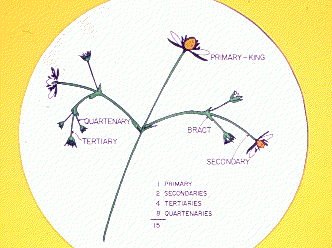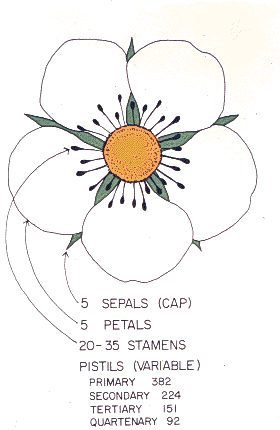Strawberry
The Plant
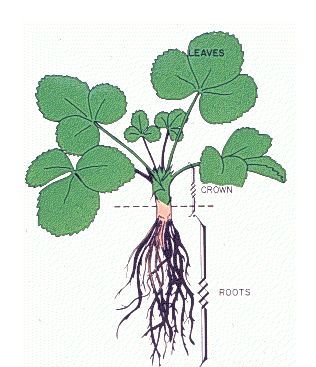
An understanding of strawberry plant biology will help growers adapt and modify the general recipe of strawberry production to meet their specific conditions. This guide will discuss two major types of strawberries: June bearers and day neutrals.
The major parts of the plant are the roots, crown, leaves and flowers. These parts will be described here and will be referred to in sections outlining cultural practices.
The Root
The root system consists of main or primary roots and secondary roots which grow from the primary roots. A mature plant may have between 25 and 35 primary roots. They may live one or more years with new primary roots being produced at a higher point on the base of the crown.
The strawberry plant is shallow rooted. Most of its roots are contained in the top 6 in (15 cm) of soil.
Day neutral plants have a shallower root system with most roots in the top 3 to 4 in (8 to 10 cm).
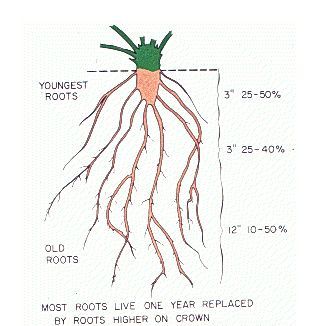
The Crown
The crown is a short stem where leaves develop at points called nodes or auxiliary buds. New leaves develop with a bud in the axil of each leaf (auxiliary buds). These auxiliary buds will either remain undeveloped, grow and form runners or grow to form a side or branch crown.
Environmental factors like day length and temperature influence the development of auxiliary buds. The buds of June bearers develop into runners during the summer?s long 14 to 16 hour days. Once the days grow shorter in August and September, the buds no longer form runners. Instead they form branch crowns and flower buds. The more branch crowns that are formed, the greater the potential for fruit production during the next year since each crown can produce one flower stalk on which fruit is borne.
The buds of day neutrals can initiate flowers under any day length. For the Prairies this can range from mid June to October.
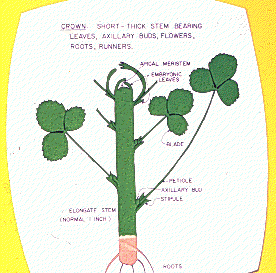
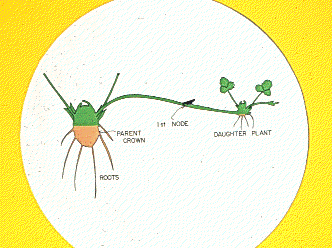

Flower Stalk (Inflorescence)
Flower buds are formed in the tip of the crown in what is known as terminal inflorescence. Each flower has five petals and 20 to 35 stamens (male parts) with 100 to 400 pistils (female parts).
The stamens bear pollen grains that must be transferred by bees to the pistil before fertilization and fruit development can take place. Cool or wet weather discourages bees and results in poor or partial fertilization, which in turn leads to misshapen berries or nubbins. Temperatures below freezing will also damage stamens by turning them black in colour. Flowers with blackened stamens will not develop into berries.
The inflorescence develops a central or primary flower that opens first. This is followed by smaller secondary, tertiary and quaternary flowers opening up in sequence. The large primary flower develops into the largest berry, known as the "king" berry.
Daytime temperatures of 25 degrees C or more and similar evening temperatures reduce flower initiation in day neutrals.
It usually takes about 30 days for flowers of June bearers to develop into fruit. This period may be reduced to 18 days with good growing conditions and high temperatures. Adverse conditions like cool weather could extend development to 40 days or more.
